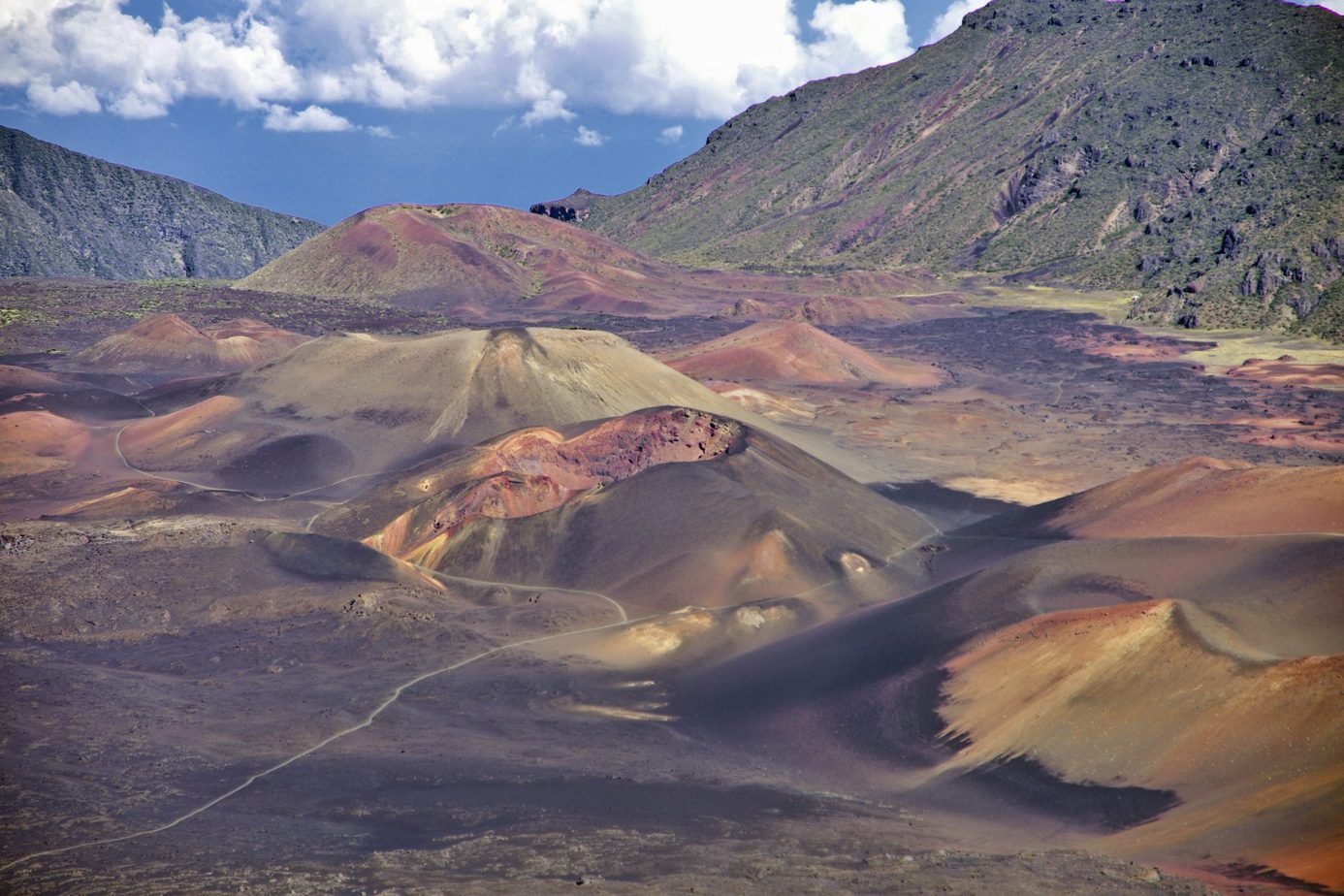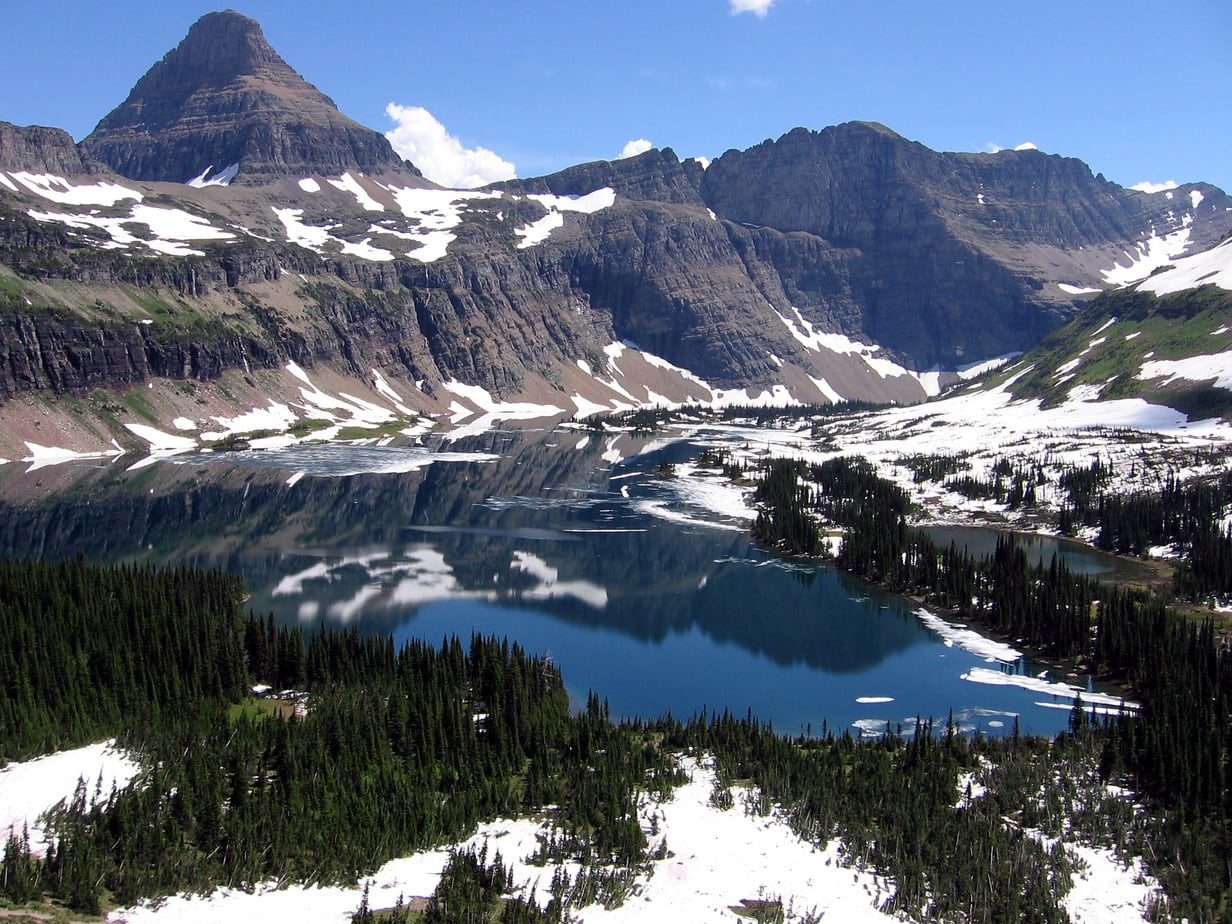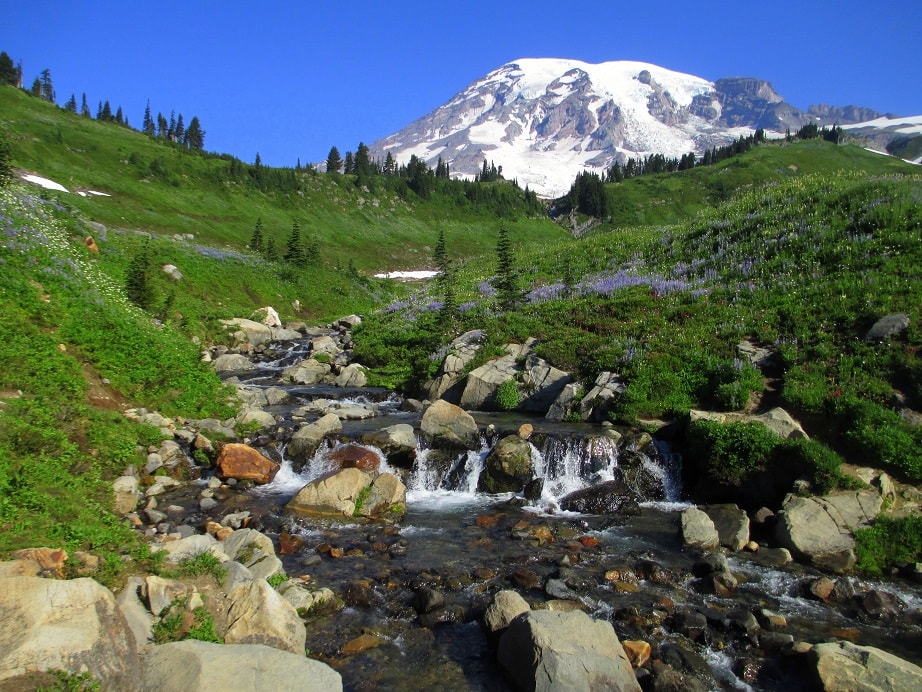National parks are home to some of the world’s greatest natural treasures. After people became interested in conservation efforts in the 19th century, the world’s first national parks were established in the United States.
Five of the oldest national parks (Sequoia and Kings Canyon National Parks have been grouped together on this list) have been operating since the late 19th centuries, over 100 years ago!
11. Hawai’i Volcanoes National Park
Year Established: August 1, 1916 as part of Hawaii National Park; became a separate park in 1961
Location: Hawaii County, Hawaii (Big Island)
Total Area: 323,431 acres (1,308.88 km²)
Annual Visitors: 1,116,891 in 2018

As its name implies, Hawai’i Volcanoes National Park is home to two active volcanoes, Kīlauea, one of the world’s most active volcanoes, and Mauna Loa, the world’s most massive shield volcano. There is also a large pit crater, Halemaʻumaʻu, that sometimes contains an active lava lake – it was most recently active between 2008 to 2018.
Did You Know?
Although Hawai’i Volcanoes National Park is open to the public, portions of the park have been closed down in recent years due to the eruptive activity at Kīlauea.
10. Haleakalā National Park
Year Established: August 1, 1916
Location: Maui County, Hawaii
Total Area: 33,265 acres (134.62 km²)
Annual Visitors: 1,044,084 in 2018

Haleakalā National Park is located on the island of Maui in Hawaii and is named for Haleakalā, a dormant volcano within its boundaries. he land was designated a national park in 1976 and its boundaries were expanded in 2005. The name of the volcano and park, Haleakalā, means “house of the sun” in the native Hawaiian language. Haleakalā is home to a unique array of flora and fauna. Unfortunately, there are more endangered species in Haleakalā National Park than any other national park in the United States.
Did You Know?
The last time that the Haleakalā volcano erupted was sometime between 1480 and 1600.
9. Rocky Mountain National Park
Year Established: January 26, 1915
Location: Larimer, Grand, and Boulder Counties, Colorado
Total Area: 265,461 acres (1,074.28 km²)
Annual Visitors: 4,590,493 in 2018

Rocky Mountain National Park is, of course, home to the Front Range of the Rocky Mountains. The eastern and western slopes of the Continental Divide run directly through the center of the park with the headwaters of the Colorado River located in the park’s northwestern region.
President Woodrow Wilson established Rocky Mountain National Park in 1915. As home to the Rocky Mountains, the park is one of the most visited anywhere in the world, with millions of people coming through each year.
Did You Know?
Rocky Mountain’s Trail Ridge Road is the highest continual highway in the country. Its maximum height is 12,183 feet (3,713.38 meters) – equivalent to an 1,100-story building.
8. Glacier National Park
Year Established: May 11, 1910
Location: Flathead and Glacier Counties, Montana
Total Area: 1,013,322 acres (4,100.77 km²)
Annual Visitors: 2,965,309 in 2018

Glacier National Park is one the largest in the U.S., encompassing an area of about 1,013,322 acres (4,100.77 square kilometers) in Montana. The park includes parts of two mountain ranges, which are sub-ranges of the Rocky Mountains. There are also over 130 named lakes , more than 1,000 different species of plants, and hundreds of species of animals.
Not long after Glacier National Park was established in 1910, a number of hotels and chalets were constructed by the Great Northern Railway. These hotels and chalets are now listed National Historic Landmarks and a total of 350 locations are on the National Register of Historic Places.
Did You Know?
Like a few of the other parks on this list, the area that would become Glacier National Park was first inhabited by Native Americans, who were forced off the land after the arrival of European explorers.
7. Mesa Verde National Park
Year Established: June 29, 1906
Location: Montezuma County, Colorado
Total Area: 52,485 acres (212.40 km²)
Annual Visitors: 563,420 in 2018

Mesa National Park is located in Montezuma County, Colorado and was designated a national park in 1906 by Congress and President Theodore Roosevelt. The park protects some of the best-preserved Ancestral Puebloan archaeological sites in the United States. There are about 600 cliff dwellings across more than 5,000 sites in Mesa National Park. One of the park’s most notable structures is Cliff Palace, which is believed to be the largest cliff dwelling in the United States.
Did You Know?
Native Americans had been living in what is now Mesa National Park since at least c.7500 BCE, but were eventually driven from the area in the 13th century, following a period of social and environmental instability driven by a series of severe and prolonged droughts.
6. Wind Cave National Park
Year Established: January 9, 1903
Location: Custer County, North Dakota
Total Area: 33,847 acres (136.97 km²)
Annual Visitors: 656,397 in 2018

Wind Cave National Park was established in 1903 by President Theodore Roosevelt. It was the first cave in the world to be designated a national park. The cave is located in South Dakota and is known for its its calcite formations known as boxwork, as well as its frostwork. Wind Cave holds many records, including being the densest cave in the world with the greatest passage volume per cubic mile. It is also one of the longest caves in the world, with 149.01 miles (239.81 kilometers) of explored cave passageways, as of 2018.
Did You Know?
About 95 percent of the world’s discovered calcite boxwork formations are found in Wind Cave.
5. Crater Lake National Park
Year Established: May 22, 1902
Location: Klamath County, Oregon
Total Area: 183,224 acres (741.48 km²)
Annual Visitors: 720,659 in 2018

Crater Lake National Park was established in 1902 and is the only national park in Oregon. The park encompasses the caldera of Crater Lake, a remnant of a destroyed volcano, Mount Mazama, and the surrounding hills and forests.
Crater Lake is 1,949 feet (594 m) deep at its deepest point, making it the deepest lake in the U.S., the second deepest in North America, and the ninth deepest in the world. However, based on average depth, which is 1,148 feet (350 m), Crater Lake is the deepest in the Western Hemisphere and the world’s third deepest.
Did You Know?
Crater Lake is known for its striking blue color and lake is refilled entirely from direct precipitation in the form of snow and rain; there are no rivers or streams flowing into or out of Crater Lake.
4. Mount Rainier National Park
Year Established: March 2, 1899
Location: Pierce and Lewis Counties, Washington
Total Area: 236,381 acres (956.60 km²)
Annual Visitors: 1,518,491 in 2018

Mount Rainier National Park was named for Mount Rainier, a stratovolcano located in Washington state. Surrounding Mount Rainier is the Wonderland Trail and the mountain is covered by glaciers and snowfields totaling about 35 square miles (91 km2). Mount Rainier is one of the most popular peaks for mountaineering. About 10,000 people attempt to climb Mount Rainier per year with approximately 50% making it to the summit.
Did You Know?
Mount Rainier National Park is home to Carbon Glacier, which is the largest glacier by volume in the contiguous United States, while Emmons Glacier is the largest glacier by area.
3. Yosemite National Park
Year Established: October 1, 1890
Location: Tuolome, Mariposa, Mono, and Madera Counties, California
Total Area: 748,436 acres (3,028.81 km2)
Annual Visitors: 4,009,436 in 2018

Yosemite is one of the most visited national parks in the U.S. and was established around the same time as the Sequoia and Kings National Parks in 1890. The park is known for its granite cliffs, waterfalls, clear streams, giant sequoia groves, lakes, mountains, meadows, glaciers, and biological diversity.
Yosemite contains five major vegetation zones: chaparral and oak woodland, lower montane forest, upper montane forest, subalpine zone, and alpine. Additionally, Yosemite is home to more than 160 rare plants, with rare local geologic formations and unique soils characterizing the restricted ranges many of these plants occupy.
Did You Know?
Yosemite National Park is considered the birth place of rock climbing for sport.
2. Sequoia and Kings Canyon National Parks
Year Established: September 25, 1890 / October 1, 1890
Location: Fresno and Tulare Counties, California
Total Area: 404,064 acres (1,635.19 km²) / 461,901 acres (1,869.25 km²)
Annual Visitors: 1,229,594 / 699,023 in 2018

While Sequoia and Kings Canyon National Parks are technically two separate parks, they’re administered together and are one contiguous area. Sequoia National Park was established first on September 25, 1890 and Kings Canyon followed a week later.
As the park’s name suggests, Sequoia National Park is known for its giant sequoia trees, including General Sherman, which is the largest tree on Earth. Kings Canyon is a rugged glacier-carved valley more than a mile (1,600 meters) deep. Both parks preserve a landscape that still resembles the southern Sierra Nevada before Euro-American settlement.
Did You Know?
Sequoia National Park is home to five of the ten largest trees in the world, while Kings Canyon National Park has some of the steepest vertical relief in North America, with numerous peaks over 14,000 feet (4,300 meters) on the Sierra Crest along the park’s eastern border, falling to 4,500 feet (1,400 meters) in the valley floor of Cedar Grove.
1. Yellowstone National Park
Year Established: March 1, 1872
Location: Park County and Teton County, Wyoming; Gallatin County and Park County, Montana; and Fremount County, Idaho
Total Area: 2,219,791 acres (8,983.18 km2)
Annual Visitors: 4,115,000 in 2018

Opened over 147 years ago, Yellowstone National Park is not only the oldest national park in the United States, but also the world. Yellowstone was established in 1872 by the U.S. Congress and signed into law by President Ulysses S. Grant.
Yellowstone covers an area of 3,468.4 square miles (8,983 km2), comprising lakes, canyons, rivers, and mountain ranges. One of the park’s most famous geothermal features is Old Faithful, a geyser that has erupted every 44 to 125 minutes since 2000.
Did You Know?
Yellowstone National Park is apart of the Greater Yellowstone Ecosystem, the largest remaining nearly-intact ecosystem in the Earth’s northern temperate zone.











